How to repair cracks in brick walls
How to fix a crack in a brick wall? Brick is the most common building material used for the construction of buildings. But its disadvantage is cracks in the wall of a brick house that appear during operation.
To eliminate such a disadvantage is not particularly difficult. In this case, you need to determine the causes of cracks and choose the right process, which is recommended to learn from this article.
The content of the article
What are the causes of cracks and their types
Tip: To detect cracks in the masonry, visually inspect the entire house. Pay attention to the direction of expansion of the split.
The direction of cracks is influenced by the load on the wall.
For example:
- From vertical loading, the expansion goes down.
- When the foundation sags, the cracks expand upward.
- From wear of the material, numerous cracks open closer to the surface.
Cracks can be:
- Constructive. Such causes of cracks in brick walls arise due to:
- an error in calculating the depth of the foundation;
- incorrectly selected wall load;
- non-compliance with the technology of building a house;
- brand of masonry mortar does not correspond to the current loads;
- lack of wall reinforcement.
- Temperature. Such defects are formed from:
- freezing of the foundation;
- temperature differences.
- Shrinking. Their reasons may be:
- foundation pit near the house;
- the building is being erected on bulk soils.
- Deformation. Wrong material selected.
- From wear. All materials have a certain service life.
In appearance and depth of a crack, there are:
- Vertical.
- Horizontal
- Inclined.
- Direct.
- Curved.
- Closed or not going to the edges of the wall.
- Cross-cutting.
- Superficial.
The size of the gap is divided into:
- Wide, more than one centimeter.
- Medium, from 5 to 10 millimeters.
- Small, up to 5 millimeters.
How to check cracks for stabilization of their further expansion
Tip: Repairing cracks in a brick wall should begin only after the process of its further increase is completely suspended.
The elimination of cracks in the brick walls of the house is performed after the final determination of the causes of their appearance and the end of the shrinkage process. To understand whether the cracking process has ended, you need to conduct a special tensile test.
This is done with:
- Plaster beacons.
- Plate beacons with a special scale.
You can determine stabilization:
- Sticking paper on the crack.
- By applying a cement strip.
After a certain time, the remaining whole paper or strip indicates that the repair of cracks in the brick wall can be performed. When continuing the deformation process, it is necessary to wait for its completion. At this stage, to carry out any repair work does not make sense, a crack will reappear.
How to repair cracks in a brick house
Before closing a crack in a brick wall, it is necessary to prepare tools and materials.
They can be:
- A small spatula, for the convenience of mixing the solution.
- Capacity for the mixture.
- Construction trowel.
- Hammer.
- Brush.
- Scarpel, for processing stone.
- Putty knife.
- Polyurethane foam.
- Cement.
- River sand.
- Metal rolling.
- Fittings.
- Dowels.
- Anchor bolts.
Depending on what kind of crack is in the wall of a brick house, the option of sealing it is selected. For shallow cracks up to 5 millimeters wide, a durable mortar of cement or gypsum is used.
In this case, the repair of the crack with your own hands is performed in the following sequence:
- Preparatory work is underway. Slots are cleaned from:
- garbage;
- mud;
- dust.
- The cavity is abundantly wetted with water and left to dry.
- Crack is treated with putty or mortar. cement plaster.
- Reinforced tape is laid.
- A layer of cement mortar or putty is applied to the tape.
To seal cracks up to one centimeter wide, the instruction offers:
- Dismantle cracked masonry areas.
- Clean the repair area from debris and dust.
- Surfaces must be primed (see Why do we need a primer: technological nuances of finishing work).
- Drill holes for dowels in increments of 25-50 centimeters.
- On top, fix a metal grid with 5x5 mm mesh cells with screws.
- Cover the mesh with plaster cement mortar, adding a small amount of sand to it.
- Finishing material is applied.
The sealing of wide cracks is performed in the following sequence:
- Cracked bricks are removed from the outside of the wall.
- The defect site is cleaned with a construction scarp from any dirt and dust.
- New bricks are laid on cement mortar.
- Such cracks can be eliminated with the help of a metal anchor, as in the photo, which is a plate with two pins or anchors located on it.
Tip: Cracks with a width of more than one centimeter are critical defects in the walls of the house, requiring special methods of repair.
To eliminate them, you will need:
- Clean the damaged area from contamination.
- Fill the defect with foam.
- Leave to dry completely.
- Cut the foam to a depth of two centimeters.
- Pour the resulting recess with a cement-sand or cement composition.
- Apply finishing material.
If there is no way to dismantle the cracked brickwork of the building, you can do this:
- The repair site is cleaned of debris and dust.
- Slots are sealed with cement mortar.
- T-shaped strong anchors, which are necessary for fixing with dowels on both sides of the slit, are driven into the cracks. They are attached to the surface of the wall of the building.
How to close through cracks
To eliminate such defects, you can strengthen the walls.
In this case:
- Preparatory work is being carried out: damaged areas are cleared of the old coating, dirt and dust.
- The crack is wetted by water and given time to dry.
- The slit is filled with cement mortar and crushed stone of a small fraction.
- If necessary, steel plates are fixed with anchors and dowels.
- Finishing work is carried out on damaged sections of the building walls.
Through gaps can be removed with metal brackets.
For this:
- Prepared by:
- metal plates - two pieces;
- bolts for tightening, they will be passed through the wall.
Tip: To prevent further opening of the crack, steel brackets should be hammered on both sides of the crack into the wall. Bend their ends to the wall and fix with bolts.
- Before fixing, the bolt holes are filled with cement.
- Large defects are eliminated by installing several brackets.
- The crack itself is cemented in the same way as in other cases.
How to eliminate cracks in brick walls and dangerous cracks
For cracks that appeared on the walls of the external brick walls, a metal clip is used. Depending on the width of the wall, the sizes of the cage and its design are selected. To eliminate serious cracks that threaten to destroy the house, metal log rods are installed on both sides of the wall. This will allow the building to cover a powerful steel bandage.
How to fix foundation flaws
Cracks can often be caused by deficiencies in the foundation.
When strengthening the foundation, further cracking and creeping can be ruled out.
For this:
- A trench is digging along the crack formation area, not thicker than a monolithic base, but with a depth slightly lower than the edge from below.
- The crack site is cleaned, freed from poorly retaining elements, cement mortar, slightly increased.
- The site is drilled under reinforcement vertically and horizontally.
- Anchors are woven with reinforcement and welded. The distance between the reinforcement is from 0.6 to 1 meter, which depends on the size of the crack. The created structure will become the frame connecting the house with the new reinforced base.
- Mounted wooden formwork.
- Concrete is poured.
- Settles for drying, approximately 28 days.
- A blind area is being made.
Paper beacons check the elimination of the cracking process.
After the restoration of the foundation, the walls are repaired:
- Damage up to 5 millimeters is sealed with a cement mortar, the edges are chipped, cleaned, wetted so that they adhere well to the mortar.
- Cracks of more than one centimeter are sealed with cement and sand in a ratio of 1: 3.
With large cracks in the brick walls, emergency measures will be required:
- Brickwork is disassembled from above, damaged parts are removed. New bricks are stacked with a lock, reinforced with metal rods, profile corners or metal strips.
- When masonry breaks, metal strips are taken, their ends are bent into the masonry and squeezed out with bolts, anchors and screws.
Tip: If it is impossible to use such methods, pour gravel with cement into the gap. At a distance of about 25 centimeters on both sides, it is necessary to drive in T-shaped anchors. Elements are connected by metal strips.
- Deep cracks that cannot be completely covered with cement are filled by injection of the solution. To do this, holes are made with a diameter of more than 25 millimeters in increments of 20 centimeters around the perimeter of the slit. A tube with a solution is inserted into the holes. Through it, a sealant is pumped into the slot with a pump or a vacuum syringe, carefully filling the voids.
With very large cracks in the brick walls, if the masonry is cracked through, repair work is carried out from the outside and from the inside.
Wherein:
- The site is cleared, its edges are processed.
- The crack is deeply moistened, filled with gravel, cement.
- If necessary, steel plates are installed, which are fastened with dowels, anchors.
- After drying, the wall is covered with plaster or other cladding.
How to strengthen brick walls
Tip: If there are no results after the repair work of the walls, it is necessary to partially re-arrange them.
For a guaranteed fortress of a cracked brick wall, it is advisable to strengthen it from the inside of the building.
This implies:
- Crack closing.
- The imposition of a lock on it, or a metal profile.
- The lock is attached to the wall with anchors, and the gap is overlapped across it, which will prevent its increase in the future.
- Repair can be performed with metal brackets, their ends should go into the wall to a depth of at least 1/2 the thickness of this wall, in which holes for the brackets should be drilled in advance.
- After a day, such a repaired wall can be commissioned. But in any case, it can not be heavily loaded - the wall will gain full strength only in a month.
If cracks appeared due to an incorrectly poured foundation, the best solution would be to strengthen the base with an auxiliary concrete belt.
For this:
- It is dug around the entire perimeter of the house with a trench deeper than the depth of the foundation.
- It will fit the auxiliary belt.
- In order to prevent further cracks in the masonry, the base is poured using the appropriate technology.
What cracks in brick walls can be, their cause, methods of elimination can be found in the video in this article. Cracks in masonry are very common. The price of solving this problem is different, and getting rid of it is worth it immediately to avoid violating the integrity of the structure of the residential building.
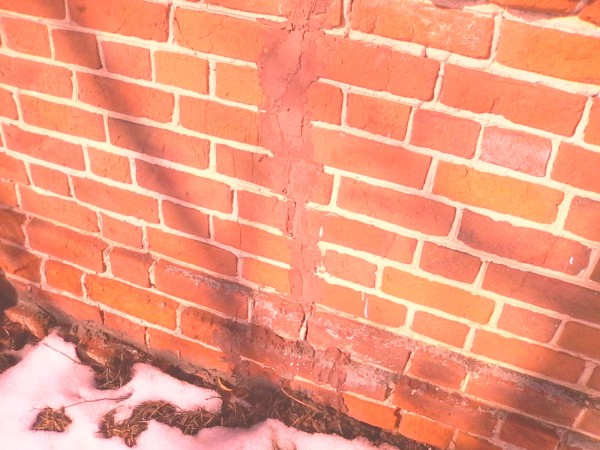
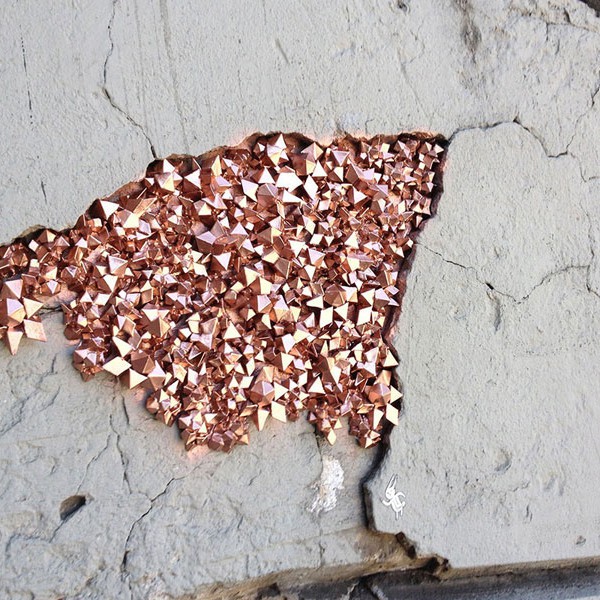
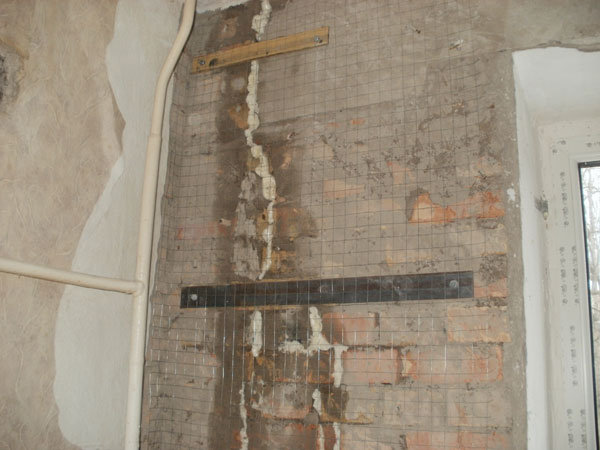

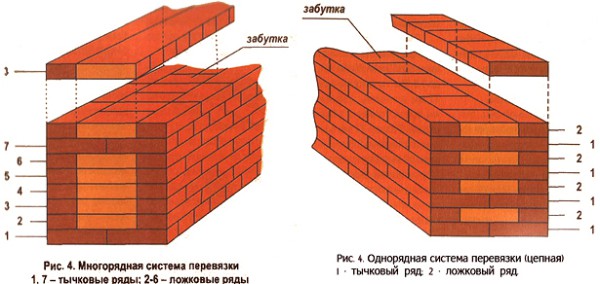

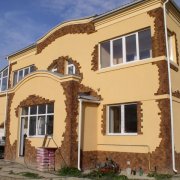
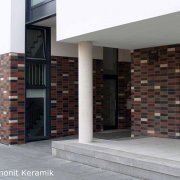

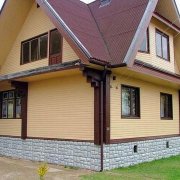
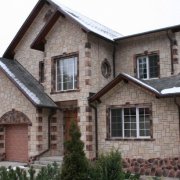
Crack paper? What kind of amateur wrote an article? No specialist will ever glue a piece of paper on a crack and wait for a miracle.